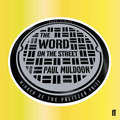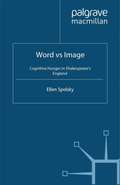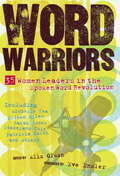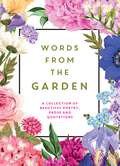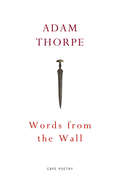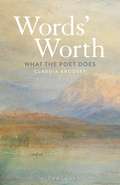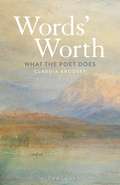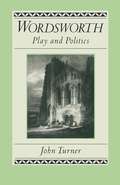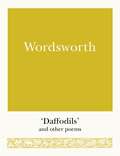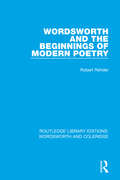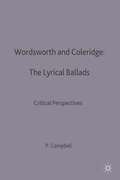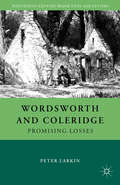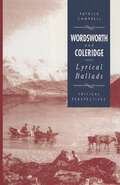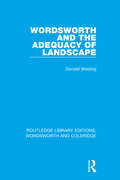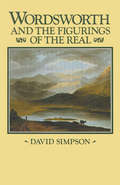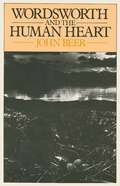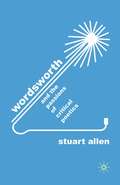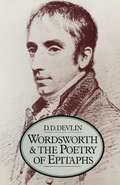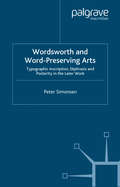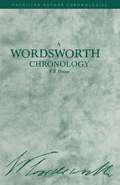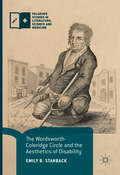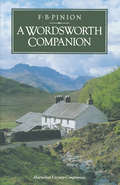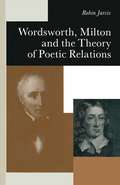- Table View
- List View
The Word on the Street: Rock Lyrics
by Paul MuldoonIn this new collection Paul Muldoon goes back to the essential meaning of the term 'lyric' -a short poem sung to the accompaniment of a musical instrument. These words are written for music, assuredly, with half an ear to Yeats's ballad-singing porter drinkers and half to Cole Porter-and indeed, many of them double as rock songs, performed by the Wayside Shrines, the Princeton-based music collective of which Muldoon is a member. Their themes are the classic themes of song: lost love, lost wars, Charlton Heston, barbed wire, pole dancers, cellulite, Hegel, elephants, Oedipus, more barbed wire, Buddy Holly, Jersey peaches, Julius Caesar, Trenton, cockatoos, and the Youngers (Bob and John and Jim and Cole).The Word on the Street is a lively addition to this Pulitzer Prize-winning poet's masterful body of work. It demonstrates, once again, that, as Richard Eder has written in the pages of the New York Times Book Review, 'Paul Muldoon is a shape-shifting Proteus to readers who try to pin him down . . . Those who interrogate Muldoon's poems find themselves changing shapes each time he does.'
Word vs Image: Cognitive Hunger in Shakespeare’s England
by E. SpolskyArguing on recent cognitive evidence that reading a Bible is much more difficult for human brains than seeing images, this book exposes the depth and breadth of Protestant theologians' misunderstandings about how people could reform their spiritual lives - how they could literally change their minds.
Word Warriors: 35 Women Leaders in the Spoken Word Revolution
by Alix Olson Eve EnslerFemale spoken word artists have become the spokeswomen for a new generation. This demanding oral poetry of the early 21st century has defined a vanguard of lithely muscled voices; women who think and act decisively to create their distinctive and desperately earned realities. The combination of the eminent slam movement and the upsurge of bold underground feminism has created a unique pool of women who verbally challenge society on all fronts.Editor Alix Olson (internationally touring spoken word artist-activist) brought together a variety of astounding spoken word artists for Word Warriors. Included in this collection are Patricia Smith and Eileen Myles, two of our most formidable spoken-word foremothers, Tony-award winners Sarah Jones, Suheir Hammad and Staceyann Chin, recording artists Bitch and Lynn Breedlove from the dyke-punk band Tribe 8, award-winning writer Michelle Tea, and many more. These women join other amazing artists from many different backgrounds to create Word Warriors, a powerful and comprehensive collection of work from the best and brightest female spoken word artists today.
Words From the Garden: A Collection of Beautiful Poetry, Prose and Quotations
by Isobel CarlsonThis beautiful collection of poetry and prose through the seasons rhapsodises on the spectacle of colour and everything green and flourishing in the garden. The perfect book for a moment’s reflection, whether you are cooped up on a rainy day in your potting shed or admiring the fruits of your labour on a sunny evening from the pergola.
Words From the Wall
by Adam ThorpeThese remarkable poems are despatches from the edges of experience: from the remote coast of northern Iceland where tree-trunks and dead whales lie beached, to the furthest outposts of the Roman empire in the title poem – ‘From the very limit of the world,/Flavius sends you greetings, my lord.’ The collection is concerned with borders and brinks – the liminal spaces where distinctions blur between outer and inner, known and unknown, between what is familiar and what is other. This is the terrain of the displaced and deracinated but also the shimmering space where all is volatile, mutable, in flux – and it is also, of course, the thin, transparent veil between waking and sleep, between life and death.Shadowed by mortality, lit by lyrical grace, Words from the Wall includes poems about the killing fields of Agincourt, Flanders, Vietnam and a memorial poem to the victims of the 2015 Bataclan attack where the dead are ‘stations of flame’, and it begins and ends at the boundaries of the Roman territory, at the edge of life: ‘The girls I laughed with once/in the baths’ atrium/are withered and wattle-necked./I love them still…’
Words' Worth: What the Poet Does
by Claudia BrodskyClaudia Brodsky marshals her equal expertise in literature and philosophy to redefine the terms and trajectory of the theory and interpretation of modern poetry. Taking her cue from Wordsworth's revolutionary understanding of “real language,” Brodsky unfolds a provocative new theory of poetry, a way of looking at poetry that challenges traditional assumptions. Analyzing both theory and practice, and taking in a broad swathe of writers and thinkers from Wordsworth to Rousseau to Hegel to Proust, Brodsky is at pains to draw out the transformative, active, and effective power of literature. Poetry, she says, is only worthy of the name when it is not the property of the poet but of society, when it is valued for what it does. Words' Worth is a bold new work, by a leading scholar of literature, which demands a response from all students and scholars of modern poetry.
Words' Worth: What the Poet Does
by Claudia BrodskyClaudia Brodsky marshals her equal expertise in literature and philosophy to redefine the terms and trajectory of the theory and interpretation of modern poetry. Taking her cue from Wordsworth's revolutionary understanding of “real language,” Brodsky unfolds a provocative new theory of poetry, a way of looking at poetry that challenges traditional assumptions. Analyzing both theory and practice, and taking in a broad swathe of writers and thinkers from Wordsworth to Rousseau to Hegel to Proust, Brodsky is at pains to draw out the transformative, active, and effective power of literature. Poetry, she says, is only worthy of the name when it is not the property of the poet but of society, when it is valued for what it does. Words' Worth is a bold new work, by a leading scholar of literature, which demands a response from all students and scholars of modern poetry.
Wordsworth: Play And Politics : A Study Of Wordsworth's Poetry 1787-1800 (Studies In Romanticism Ser.)
by John Alan TurnerWordsworth: 'Daffodils' and Other Poems (Pocket Poets #4)
by William WordsworthWilliam Wordsworth is chiefly remembered as one of the ‘Lake Poets’. Yet he was also one of the founders of English Romanticism, a writer whose early revolutionary fervor imbued his verse and his ideals.Much of Wordsworth’s work was inspired by nature, but to a style rich in lyrical imagery he brought a deep interest in liberal humanitarianism and a profound concern for the lives, habits and speech of ordinary people, especially country people.This pocket-sized collection includes: ‘I wandered lonely as a cloud’ (‘Daffodils’), ‘Ode. Intimations of Immortality’, ‘Character of the Happy Warrior’, ‘The Solitary Reaper’, ‘To a Sky-Lark’, ‘Tintern Abbey’, and extracts from ‘The Prelude’.
Wordsworth and Beginnings of Modern Poetry (RLE: Wordsworth and Coleridge)
by Robert RehderFirst published in 1981, this study sees Wordsworth’s work as part of the continuous European struggle to come to terms with consciousness. The author pays particular attention to Wordsworth’s style and investigates the unstated and unconscious assumptions of that style. He discusses the conflicting feelings that shaped Wordsworth’s changing conception of The Recluse, offers a new interpretation of his classification of his poems and examines the meaning of one of his favourite images — the panoramic view of a valley filled with mist. While the emphasis is on Wordsworth’s greatness as a poet, the book stresses the importance of significance of his relation to European literature and poetry.
Wordsworth and Beginnings of Modern Poetry (RLE: Wordsworth and Coleridge)
by Robert RehderFirst published in 1981, this study sees Wordsworth’s work as part of the continuous European struggle to come to terms with consciousness. The author pays particular attention to Wordsworth’s style and investigates the unstated and unconscious assumptions of that style. He discusses the conflicting feelings that shaped Wordsworth’s changing conception of The Recluse, offers a new interpretation of his classification of his poems and examines the meaning of one of his favourite images — the panoramic view of a valley filled with mist. While the emphasis is on Wordsworth’s greatness as a poet, the book stresses the importance of significance of his relation to European literature and poetry.
Wordsworth and Coleridge: Critical Perspectives
by P. CampbellLyrical Ballads have always been wedded to controversy. Though the judgments of the periodicals and the ensuing authorial reaction have long since been superseded by a plethora of scholarly interpretations, the debate still focuses on their elusive, paradoxical character. Are the poems traditional or experimental, a random collocation or an organised sequence? Patrick Campbell surveys the critical fluctuations of nearly two centuries while privileging recent approaches which have sought fresh perspectives on the volume - contextual, formalist and genre based, psycho-analytic, materialist, maverick.
Wordsworth and Coleridge: Promising Losses (Nineteenth-Century Major Lives and Letters)
by P. LarkinWordsworth and Coleridge: Promising Losses assembles essays spanning the last thirty years, including a selection of Peter Larkin's original verse, with the concept of promise and loss serving as the uniting narrative thread.
Wordsworth and Coleridge: Critical Perspectives
by P. CampbellLyrical Ballads have always been wedded to controversy. Though the judgments of the periodicals and the ensuing authorial reaction have long since been superseded by a plethora of scholarly interpretations, the debate still focuses on their elusive, paradoxical character. Are the poems traditional or experimental, a random collocation or an organised sequence? Patrick Campbell surveys the critical fluctuations of nearly two centuries while privileging recent approaches which have sought fresh perspectives on the volume - contextual, formalist and genre based, psycho-analytic, materialist, maverick.
Wordsworth and the Adequacy of Landscape (RLE: Wordsworth and Coleridge)
by Donald WeslingFirst published in 1970, this stylistic and interpretative account of some of Wordsworth’s major poetry examines description and meditation in his landscape writing. It describes the integration of two kinds of thinking, and a variety of beauties and lapses that come from their separation. Although Wordsworth’s deepest affinity was with nature, the author argues the finest landscape writing of the poet’s late twenties and early thirties derives from his attempt to humanise his love of nature. This work therefore aims to examine the way in which Wordsworth strives in his poetry to extend his range of concern from love of nature to love of mankind.
Wordsworth and the Adequacy of Landscape (RLE: Wordsworth and Coleridge)
by Donald WeslingFirst published in 1970, this stylistic and interpretative account of some of Wordsworth’s major poetry examines description and meditation in his landscape writing. It describes the integration of two kinds of thinking, and a variety of beauties and lapses that come from their separation. Although Wordsworth’s deepest affinity was with nature, the author argues the finest landscape writing of the poet’s late twenties and early thirties derives from his attempt to humanise his love of nature. This work therefore aims to examine the way in which Wordsworth strives in his poetry to extend his range of concern from love of nature to love of mankind.
Wordsworth and the Figurings of the Real
by David SimpsonPerhaps the most powerful feature of the Romantic imagination is its ability to dissolve existing form and order and create it anew. The Romantic investigation of the functions of the imagination also leads to important insights concerning its problems and dangers. Because it separates the person experiencing it from others around him, the imagination introduces ways of seeing which cannot be assumed to be simply communicable or easily shared, and which have as their objects different forms or 'things'. These forms, or figures, risk becoming for their originators both vehicles of power, in so far as they do convince others of their reality, and limiting constructs of prefigured order, inhibiting their users from the perception of new relations and alternative meanings. When the figured becomes the real, there thus arise difficulties in both individual and social perceptions. Arguing from the stance that all perception takes place by a creative (and hence potentially divisive) assembly of images or qualities into things, David Simpson shows that the analysis of figurative representation in Wordsworth's writing is of central importance to his idea of the human mind, and the way in which it is affected or allowed to function by its environment, both human and physical. In this way Wordsworth's ideas about the function of literature in society are seen to be more fully worked out than readers have often assumed them to be. Simpson pays particular attention to the ethical consequences of different ways of figuring the real, offering an explanation of Wordsworth's distinction between life in the town and life among the mountains and lakes of north-west England. In relating Wordsworth's poetry to important contemporary debates in political economy such as those concerning the division of labour and the evaluation of the advantages and disadvantages of commerce and luxury, he suggests that Wordsworth is a notable precursor of that nineteenth-century tradition which sees the mind as open to critical determination by social and environmental factors.
Wordsworth and the Passions of Critical Poetics
by S. AllenThis scholarly study presents a new political Wordsworth: an artist interested in 'autonomous' poetry's redistribution of affect. No slave of Whig ideology, Wordsworth explores emotion for its generation of human experience and meaning. He renders poetry a critical instrument that, through acute feeling, can evaluate public and private life.
Wordsworth and Word-Preserving Arts: Typographic Inscription, Ekphrasis and Posterity in the Later Work
by P. SimonsenBy looking at the later Wordsworth's ekphrastic writings about visual art and his increased awareness of the printed dimension of his work, Simonsen calls attention to what is uniquely exciting about this neglected body of work, and argues that it complicates traditional understandings of Wordsworth based on his so-called Great Decade.
The Wordsworth-Coleridge Circle and the Aesthetics of Disability (Palgrave Studies in Literature, Science and Medicine)
by Emily B. StanbackThis book argues for the importance of disability to authors of the Wordsworth-Coleridge circle. By examining texts in a variety of genres — ranging from self-experimental medical texts to lyric poetry to metaphysical essays — Stanback demonstrates the extent to which non-normative embodiment was central to Romantic-era thought and Romantic-era aesthetics. The book reassesses well-known literary and medical works by such authors as William Wordsworth, Samuel Taylor Coleridge, and Humphry Davy, argues for the importance of lesser-studied work by authors including Charles Lamb and Thomas Beddoes, and introduces significant unpublished work by Tom Wedgwood.
